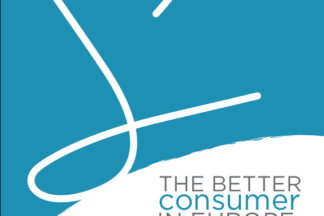In the fashion industry we’re very taken to ‘trend’: the colours, cuts, styles, fabrics of the next couple of seasons or so. Yet few venture to think about how their very own industry will look like in, say, 2020 or beyond. Resting the case for the importance of building scenarios of the long-term future.
China is the set to be the next big consumer market. Brands and retailers – hoping in this way for a few more loops of ongoing growth without reconsidering their business model – are scrambling to get their foot down in the country. The most exclusive retail addresses in Shanghai, Bejing, Hong Kong and many other metropolitan areas sell out in record time and at record prices.
2045: scenarios for the textile and fashion industry: How will the industry look like in 5, 10 and 30 years time? Scenarios offer research-based insights, and potentially can show how realistic a world is, that looks rather quite different from what we're used to. What if Asia become today's Europe? What if we did not buy to own? What if everyone was a maker?
If there is an area of fashion that is truly pushing the boundaries of what is technically and style-wise possible, then it is Haut Couture.
In January 2013 2 pieces among Iris van Harpenr’s 11-piece collection at Voltage show attracted the interested of fashionistas as much as product techies: The first ever wearable dresses created through a 3D printing process.
“Show me there is demand, and we’ll be happy to cater to it.” is the most frequently received answer when asking CEOs of consumer goods companies, fashion and apparel in particular, as to why they are not producing better, more sustainable (ecological and ethical) products.
This new report, combines – to the best of our knowledge – all available data about the increasingly popular consumer demand for more responsible products in EU countries.
In the discussions within companies around risk management and indispensable moves towards more sustainable processes and business practises, there’s habitually unmentioned elephant in the room, namely: Where, in all what needs to be done in the corporate world, does the responsibility of the individual factor in?
After 10 years in the make, CETI, the European Centre for Innovative Textiles, was finally inaugurated in October 2012. The aim of the research centre is to give the textile industry a platform to research and prototype innovative textiles that can be used in sectors like: Medical, Sport & Leisure, Hygiene, and Protection sectors representing 25% of technical textile manufacturing industry; building and civil engineering that account for 10% of the production; transport making 26% of the market volume (and 15% of the market value) of technical textiles.
In 2012, we have seen risk management and sustainability play a more important part in the agendas of leading fashion brands. Nevertheless, many companies still perform poorly at many stages of their supply chain and are unaware of the risks, particularly if they lie beyond their direct operations.
The following are the the main trends we see happening in the near and mid future. A few exist already but will become substantially more pronounced; others are just about to emerge and hit the surface of public awareness.
No More Content


